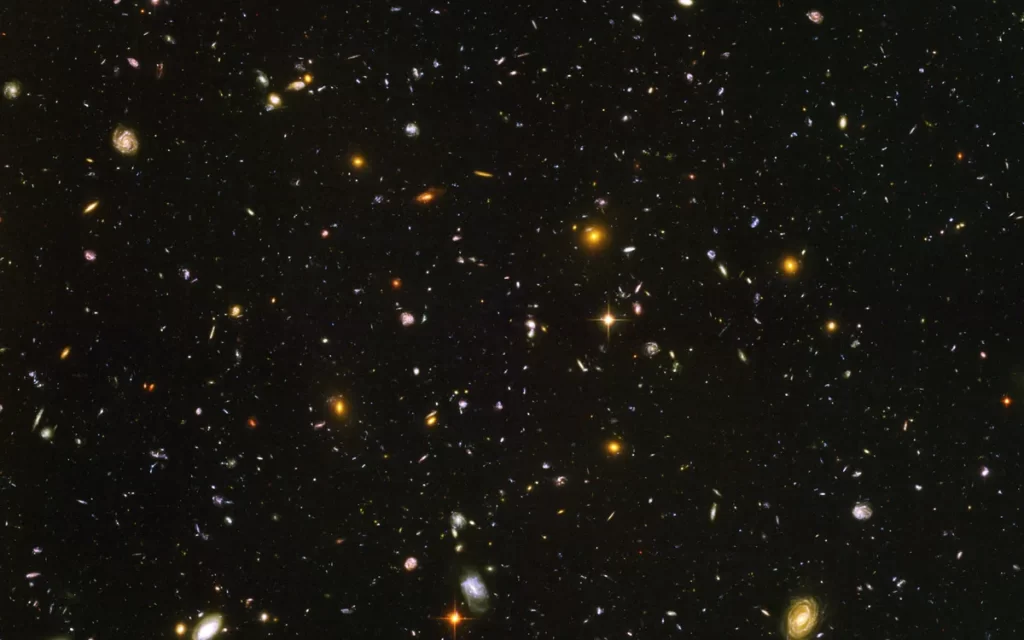The texture of space-time could be a show combining the three measurements of space with the fourth measurement of time. Concurring to the finest of current physical speculations, space-time clarifies the unordinary relativistic impacts that arise from traveling close the speed of light as well as the movement of gigantic objects within the universe.
Who found space-time?
The popular physicist Albert Einstein made a difference create the thought of space-time as portion of his hypothesis of relativity. Earlier to his spearheading work, researchers had two isolated speculations to clarify physical marvels: Isaac Newton’s laws of material science portrayed the movement of enormous objects, whereas James Receptionist Maxwell’s electromagnetic models clarified the properties of light, concurring to NASA.
But tests conducted at the conclusion of the 19th century proposed that there was something extraordinary almost light. Estimations appeared that light always traveled at the same speed, no matter what. And in 1898, the French physicist and mathematician Henri Poincaré conjectured that the speed of light may well be superb constrain. Around that same time, other analysts were considering the plausibility that objects changed in measure and mass, depending on their speed.
Einstein pulled all of these thoughts together in his 1905 hypothesis of extraordinary relativity, which hypothesized that the speed of light was a consistent. For this to be genuine, space and time had to be combined into a single system that planned to keep light’s speed the same for all eyewitnesses.
A individual in a superfast rocket will degree time to be moving slower and the lengths of objects to be shorter compared with a individual traveling at a much slower speed. That’s since space and time are relative — they depend on an observer’s speed. But the speed of light is more principal than either.
The conclusion that space-time may be a texture wasn’t one that Einstein come to by himself. That thought came from German mathematician Hermann Minkowski, who said in a 1908 colloquium, “From this time forward space by itself, and time by itself, are destined to blur absent into simple shadows, and as it were a kind of union of the two will protect an autonomous reality.”
The space-time he depicted is still known as Minkowski space-time and serves as the scenery of calculations in both relativity and quantum-field hypothesis. The last mentioned depicts the flow of subatomic particles as areas, agreeing to astrophysicist and science essayist Ethan Siegel.
How space-time works
These days, when individuals conversation about space-time, they regularly portray it as taking after a sheet of elastic. This, as well, comes from Einstein, who realized as he developed his hypothesis of common relativity that the force of gravity was due to bends within the texture of space-time.
Enormous objects — just like the sun otherwise you — make twists in space-time that cause it to twist. These bends, in turn, choke the ways in which everything within the universe moves, since objects got to take after ways along this twisted ebb and flow. Movement due to gravity is really movement along the turns and turns of space-time.
A NASA mission called Gravity Test B (GP-B) measured the shape of the space-time vortex around the Soil in 2011 and found that it closely concurs with Einstein’s predictions.
Related: Ripples in Space-Time Might Uncover the Shape of Wormholes
But much of this remains troublesome for most individuals to wrap their heads around. In spite of the fact that we can talk about space-time as being comparative to a sheet of elastic, the relationship in the long run breaks down. A elastic sheet is two dimensional, whereas space-time is four dimensional. It’s not fair twists in space that the sheet speaks to, but too twists in time. The complex conditions utilized to account for all of this are dubious for indeed physicists to work with.
“Einstein made a lovely machine, but he didn’t precisely take off us a user’s manual,” composed astrophysicist Paul Sutter for Live Science’s sister location, Space.com. “Fair to drive domestic the point, common relativity is so complex that when somebody finds a arrangement to the conditions, they get the arrangement named after them and gotten to be semi-legendary in their claim right.”
What scientists still don’t know
In spite of its multifaceted nature, relativity remains perfect way”>the most perfect way account for the physical wonders we know almost. However researchers know that their models are fragmented since relativity is still not completely reconciled with quantum mechanics, which clarifies the properties of subatomic particles with extraordinary accuracy but does not consolidate the drive of gravity.
Quantum mechanics rests on the truth that the little bits making up the universe are discrete, or quantized. So photons, the particles that make up light, are like little chunks of light that come in distinct packets.
Some theorists have speculated that perhaps space-time itself also comes in these quantized chunks, helping to bridge relativity and quantum mechanics. Researchers at the European Space Agency have proposed the Gamma-ray Astronomy International Laboratory for Quantum Exploration of Space-Time (GrailQuest) mission, which would fly around our planet and make ultra-accurate measurements of distant, powerful explosions called gamma-ray bursts that could reveal the up-close nature of space-time.
Such a mission wouldn’t launch for at least a decade and a half but, if it did, it would perhaps help solve some of the biggest mysteries remaining in physi

